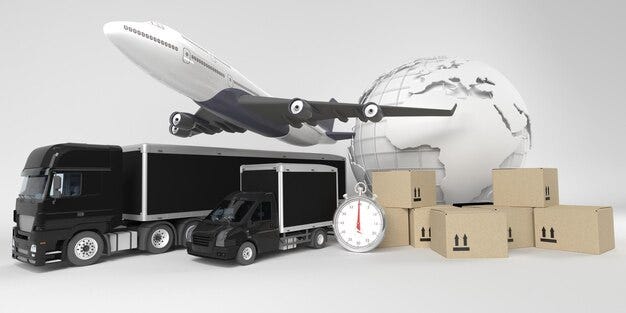Budget-Friendly Air Freight from China to Canada: A Guide for Businesses
Air freight is one of the fastest and most reliable ways to transport goods across long distances. However, many businesses may shy away from air freight due to the perception that it is too expensive or complicated. In this article, we will show you how air freight can be a viable option for budget-conscious businesses that need to ship goods from China to Canada. We will also provide some tips and factors to consider when choosing an air freight service, as well as how to optimize your packaging and comply with air freight regulations and customs procedures.
Benefits of Air Freight for Budget-Conscious Businesses
Air freight offers several benefits for businesses that need to ship goods from China to Canada, such as:
Speed: Air freight is the fastest mode of transportation, as it can deliver goods in a matter of days or even hours, depending on the destination and flight availability. This can help businesses save time and money on inventory, storage, and logistics costs, as well as meet customer expectations and deadlines.
Reliability: Air freight is less prone to delays, disruptions, and damages than other modes of transportation, such as sea, road, or rail. Air freight operators have strict schedules and security measures, and they can easily reroute flights in case of bad weather or other unforeseen circumstances. This can help businesses avoid losses, penalties, and reputational risks due to late or damaged deliveries.
Flexibility: Air freight can accommodate a wide range of goods, from small parcels to large pallets, and from fragile items to hazardous materials. Air freight can also access remote or hard-to-reach areas, where other modes of transportation may not be available or feasible. This can help businesses expand their market reach and customer base, as well as diversify their product offerings.
Safety: Air freight is one of the safest modes of transportation, as it has the lowest rate of theft, loss, and damage among all modes of transportation. Air freight operators have high standards of security and quality control, and they use advanced tracking and monitoring systems to ensure the safety and integrity of the goods. This can help businesses reduce the risk of fraud, liability, and insurance claims.
Air Freight vs. Other Shipping Methods
While air freight has many advantages, it is not always the best option for every situation. Businesses should compare air freight with other shipping methods, such as sea, road, or rail, and consider the following factors:
Cost: Air freight is generally more expensive than other shipping methods, as it involves higher fuel, labor, and infrastructure costs. However, the cost of air freight can vary depending on the weight, volume, destination, and urgency of the shipment, as well as the season, demand, and availability of flights. Businesses should also consider the hidden or indirect costs of other shipping methods, such as inventory, storage, logistics, insurance, and customs fees, which can add up over time and offset the initial savings.
Time: Air freight is the fastest shipping method, as it can deliver goods in a matter of days or even hours. However, the time of air freight can also depend on the flight schedule, availability, and frequency, as well as the origin, destination, and transit points of the shipment. Businesses should also consider the time required for preparing, packing, loading, unloading, and clearing the goods, which can affect the overall delivery time.
Environmental impact: Air freight is the most environmentally unfriendly shipping method, as it emits more greenhouse gases and pollutants than other shipping methods. However, air freight can also reduce the environmental impact of other shipping methods, such as sea, road, or rail, by shortening the distance and duration of the transportation, as well as the amount of packaging and waste generated. Businesses should also consider the environmental policies and practices of the air freight operators, as well as the regulations and standards of the origin and destination countries, which can affect the environmental impact of the shipment.
Factors to Consider When Choosing an Air Freight Service
Choosing the right air freight service can make a big difference in the cost, speed, reliability, and quality of the shipment. Businesses should consider the following factors when choosing an air freight service:
Type of service: There are different types of air freight services, such as express, standard, deferred, or charter, which offer different levels of speed, frequency, and flexibility. Businesses should choose the type of service that best suits their needs, budget, and expectations, and compare the rates, schedules, and terms and conditions of different air freight operators.
Type of carrier: There are different types of air freight carriers, such as passenger airlines, cargo airlines, or freight forwarders, which offer different capacities, networks, and specialties. Businesses should choose the type of carrier that best matches their goods, destination, and requirements, and check the reputation, experience, and performance of different air freight carriers.
Type of shipment: There are different types of air freight shipments, such as consolidated, direct, or transshipment, which involve different levels of handling, routing, and transit time. Businesses should choose the type of shipment that best optimizes their cost, speed, and reliability, and verify the tracking, documentation, and customs clearance procedures of different air freight shipments.
Tips for Finding Budget-Friendly Air Freight Rates
Finding budget-friendly air freight rates can be challenging, but not impossible. Businesses can use the following tips to find the best deals and save money on air freight:
Plan ahead: Planning ahead can help businesses avoid peak seasons, high demand, and last-minute bookings, which can drive up the air freight rates. Businesses should also monitor the market trends, exchange rates, and fuel surcharges, which can affect the air freight rates, and book in advance to secure the best rates and availability.
Compare quotes: Comparing quotes from different air freight operators can help businesses find the most competitive and transparent rates, as well as the best value and service. Businesses should also negotiate the rates, terms, and conditions with the air freight operators, and ask for discounts, incentives, or special offers, which can lower the air freight rates.
Optimize weight and volume: Optimizing the weight and volume of the goods can help businesses reduce the air freight rates, as air freight is charged by the higher of the actual weight or the volumetric weight of the goods. Businesses should also use the appropriate packaging, pallets, and containers, which can minimize the weight and volume of the goods, as well as the packaging and handling costs.
How to Optimize Your Packaging for Cost-Effective Air Freight
Optimizing the packaging of the goods can help businesses save money and ensure the safety and quality of the goods. Businesses should follow these steps to optimize their packaging for cost-effective air freight:
Choose the right packaging materials: Choosing the right packaging materials can help businesses protect the goods from damage, theft, and contamination, as well as comply with the air freight regulations and standards. Businesses should use durable, lightweight, and recyclable packaging materials, such as cardboard boxes, bubble wrap, foam peanuts, or air pillows, which can cushion and secure the goods, as well as reduce the weight and volume of the goods.
Label the goods clearly: Labeling the goods clearly can help businesses identify, track, and monitor the goods, as well as facilitate the customs clearance and delivery of the goods. Businesses should use clear, legible, and waterproof labels, which include the following information: sender’s name, address, and contact details; receiver’s name, address, and contact details; air waybill number; destination airport code; number of pieces; weight and volume of each piece; nature and value of the goods; special instructions or handling requirements; and any relevant markings or symbols, such as fragile, perishable, or hazardous.
Seal the goods securely: Sealing the goods securely can help businesses prevent the goods from opening, tampering, or spilling, as well as deter the theft or loss of the goods. Businesses should use strong, reliable, and tamper-evident seals, such as tape, straps, or locks, which can fasten and close the goods, as well as indicate any signs of interference or damage.
Understanding Air Freight Regulations and Customs Procedures
Understanding the air freight regulations and customs procedures can help businesses avoid delays, fines, or penalties, as well as ensure the compliance and legality of the goods. Businesses should follow these steps to understand the air freight regulations and customs procedures:
Research the origin and destination countries: Researching the origin and destination countries can help businesses learn about the import and export laws, rules, and restrictions, as well as the tariffs, taxes, and fees, which apply to the goods. Businesses should also check the list of prohibited, restricted, or regulated goods, such as animals, plants, food, drugs, weapons, or chemicals, which may require special permits, licenses, or certificates, or may be subject to additional inspections, tests, or quarantines.
Prepare the necessary documents: Preparing the necessary documents can help businesses prove the ownership, value, and origin of the goods, as well as declare the nature, quantity, and purpose of the goods. Businesses should also provide the following documents: commercial invoice, packing list, air waybill, certificate of origin, and any other relevant documents, such as permits, licenses, or certificates, which may be required by the origin and destination countries.
Hire a customs broker: Hiring a customs broker can help businesses simplify and expedite the customs clearance and delivery of the goods, as well as avoid any errors, omissions, or misunderstandings, which may cause delays, fines, or penalties. A customs broker is a licensed and experienced professional who can act as an intermediary between the businesses and the customs authorities, and who can handle the following tasks: filing the customs entry






Comments
Post a Comment